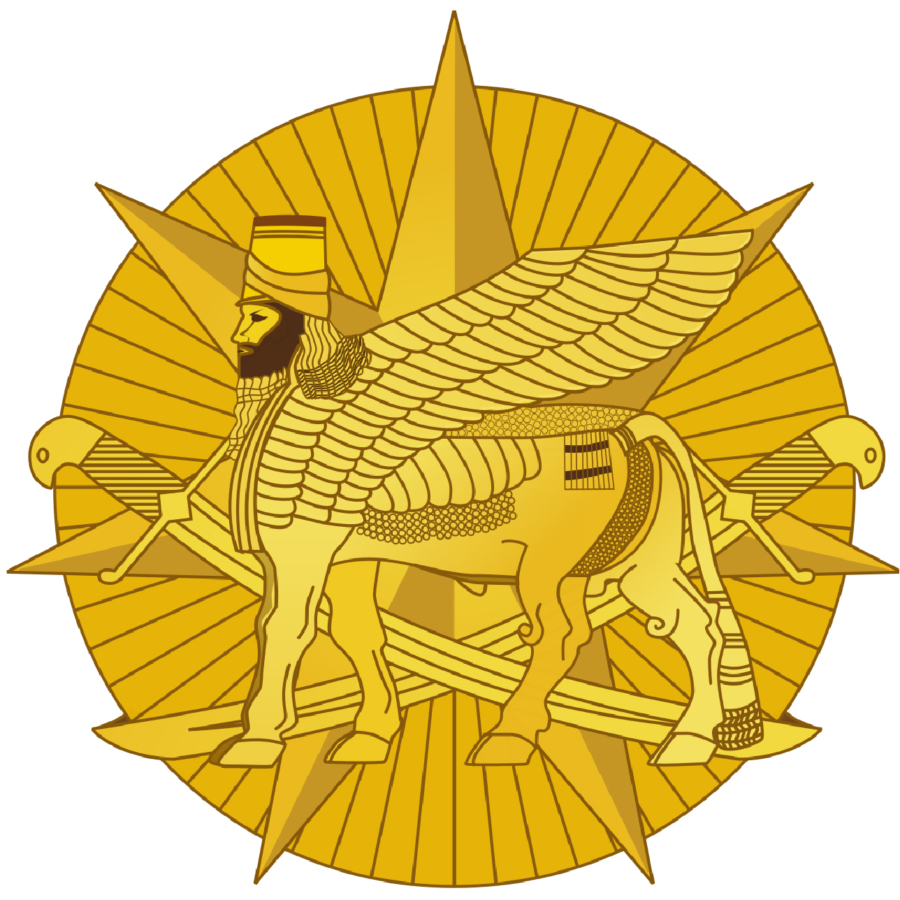The Winged Bull or Lamassu is an Assyrian protective deity. It Initially depicted as a goddess in Sumerian times, it was later depicted from Assyrian times as a hybrid of a human, bird, and either a bull or lion—specifically having a human head, the body of a bull or a lion, and bird wings, under the name Lamassu. In some writings, it is portrayed to represent a goddess.
Shape — Lamassu (human-headed winged bull)
 © [Joyofmuseums] Wikimedia
© [Joyofmuseums] Wikimedia
Assyrian sculpture typically placed prominent pairs of lamassu at entrances in palaces, facing the street and also internal courtyards. They were represented as "double-aspect" figures on corners, in high relief. From the front they appear to stand, and from the side, walk, and in earlier versions have five legs, as is apparent when viewed obliquely
 © [Gil Dbd] Wikimedia
© [Gil Dbd] Wikimedia
The form of the winged bull is still used in modern Iraq to decorate the exteriors of building, celebrating this part of the iraqi culture.









